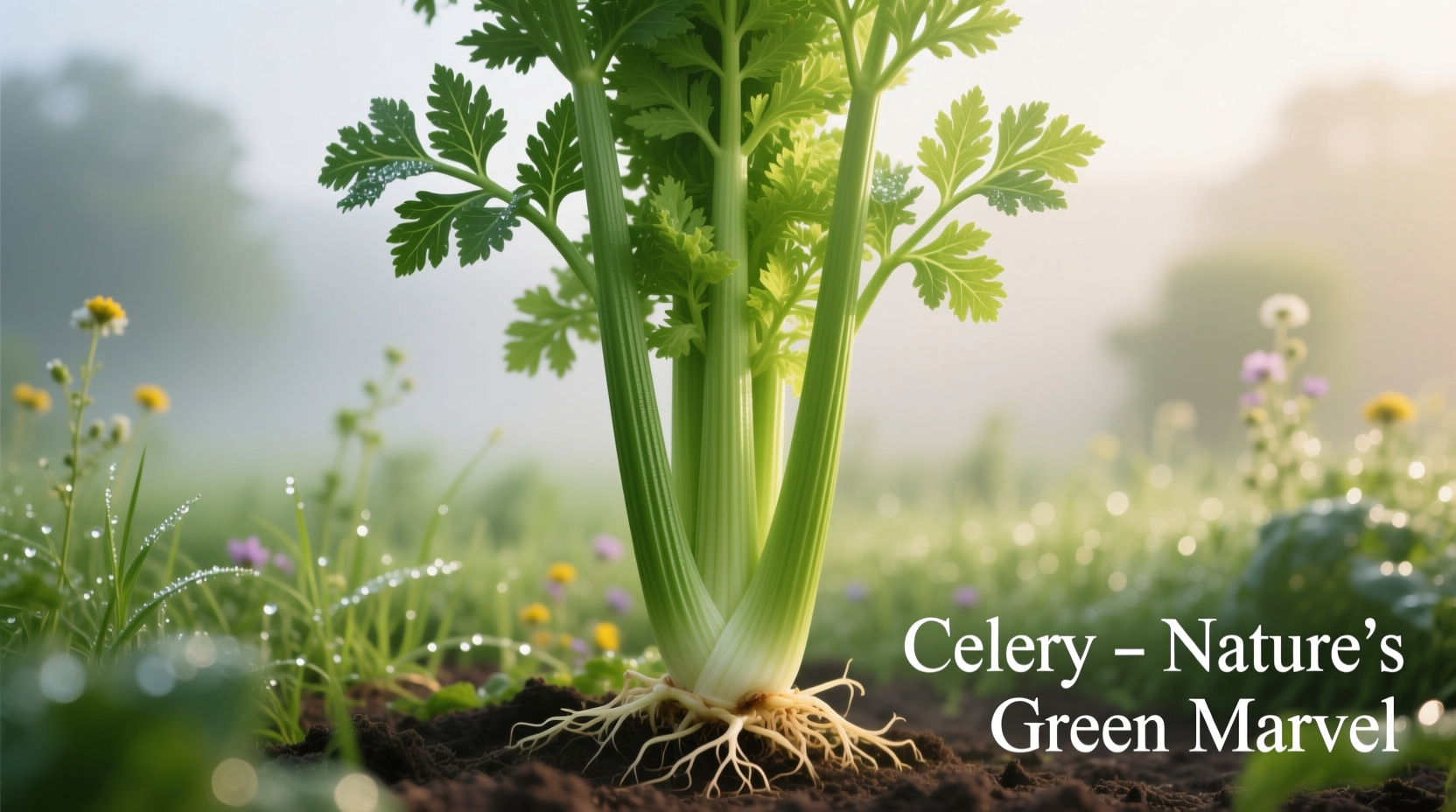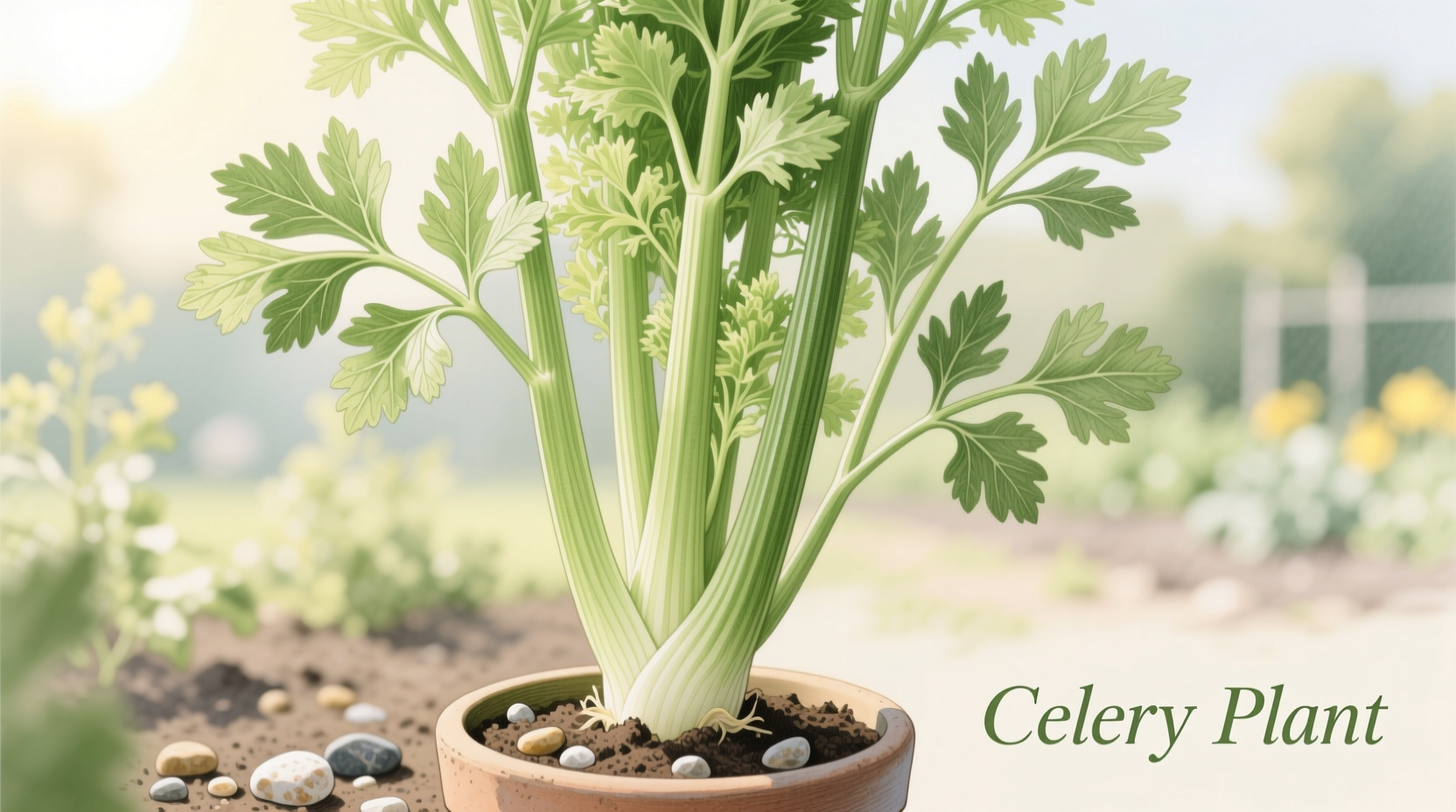
Why Growing Your Own Celery Transforms Your Cooking Experience
Homegrown celery delivers superior flavor and texture compared to store-bought varieties, which often lose freshness during transportation. When you cultivate your own celery plants, you gain access to the entire plant - not just the familiar stalks but also the intensely flavorful leaves and aromatic seeds. This complete utilization reduces food waste while elevating your culinary creations with nuanced herbal notes you won't find in supermarket celery.
Understanding Celery Plant Characteristics
Celery plants grow in a distinctive rosette pattern with tightly packed stalks emerging from a central crown. The hollow, ribbed stalks contain stringy vascular bundles that provide structural support. Mature plants reach 12-18 inches in height with an equal spread. The compound leaves feature finely divided, lacy foliage that releases a distinctive aromatic scent when crushed.
| Plant Component | Harvest Timing | Flavor Profile | Primary Uses |
|---|---|---|---|
| Outer Stalks | 70-90 days after planting | Mild, slightly salty, crisp | Raw eating, stocks, braising |
| Inner Stalks | 85-100 days after planting | Sweeter, more delicate | Salads, garnishes, raw applications |
| Leaves | Throughout growing season | Intensely herbal, parsley-like | Flavoring, pesto, herb blends |
| Seeds | Second year flowering | Concentrated, warm, slightly bitter | Spice blends, pickling, seasoning |
Optimal Growing Conditions for Success
Celery's reputation as challenging stems from its specific environmental requirements. This cool-season crop thrives in temperatures between 60-70°F (15-21°C) and suffers when exposed to prolonged heat above 75°F (24°C). Unlike many vegetables, celery requires consistent moisture without waterlogging - aim for 1-1.5 inches of water weekly, maintaining soil moisture at approximately 60% saturation.
The ideal soil for celery features high organic matter content (at least 5% organic material) with a pH between 6.0-6.8. Before planting, incorporate 3-4 inches of well-rotted compost into the top 8-10 inches of soil. Celery's shallow root system benefits from consistent nutrient availability, requiring regular applications of balanced fertilizer throughout the growing season.
Step-by-Step Planting and Care Guide
Start celery seeds indoors 10-12 weeks before your last expected frost date. Unlike many vegetables, celery seeds require light for germination, so press them gently onto the soil surface without covering. Maintain soil temperature at 70°F (21°C) for optimal germination, which typically occurs within 10-14 days.
When transplanting seedlings outdoors, space plants 8-10 inches apart in rows 18-24 inches apart. The critical blanching process - which produces the characteristic pale, tender stalks - begins when plants reach 6-8 inches tall. Surround the base with soil, cardboard collars, or specialized blanching tubes to exclude light for 2-3 weeks before harvest.
Common Challenges and Organic Solutions
Celery's primary pest concern is the celery leafminer, whose larvae create distinctive winding tunnels through leaves. According to the University of Minnesota Extension, floating row covers provide the most effective prevention when installed at transplanting. For established infestations, neem oil applications every 5-7 days can reduce populations.
Pink rot, caused by the fungus Stemphylium spp., appears as water-soaked lesions that develop pinkish spores in humid conditions. The University of California Integrated Pest Management Program recommends crop rotation with non-host plants for at least three years and avoiding overhead irrigation to prevent this disease.
Harvesting Techniques for Maximum Flavor
Harvest celery in the morning when stalks are most turgid and flavorful. For continuous harvest, remove only the outer stalks, allowing the inner stalks to continue developing. When harvesting the entire plant, cut 1-2 inches below the soil line to preserve the valuable flavor compounds concentrated near the base.
Store freshly harvested celery wrapped in a damp cloth inside a perforated plastic bag in your refrigerator's crisper drawer. Properly stored, homegrown celery maintains peak quality for 3-4 weeks - significantly longer than store-bought celery due to the absence of commercial wax coatings.
Top Celery Varieties for Home Gardeners
Pascal celery (Apium graveolens var. dulce) remains the standard green variety with excellent flavor for soups and stocks. For easier cultivation, self-blanching varieties like 'Golden Self-Blanching' develop pale stalks without manual blanching. Gardeners seeking intense flavor should try leaf celery (Apium graveolens var. secalinum), which produces abundant fragrant leaves with minimal stalk development - perfect for flavoring stocks and sauces.
Complete Plant Utilization Guide
Don't discard celery leaves! They contain higher concentrations of volatile flavor compounds than the stalks. Chop finely for salad garnishes, blend into herb oils, or dry for homemade celery salt. The base (root end) can be regrown in water for continuous leaf production. Even the fibrous strings removed from stalks can be simmered to extract flavor for stocks before discarding.











 浙公网安备
33010002000092号
浙公网安备
33010002000092号 浙B2-20120091-4
浙B2-20120091-4